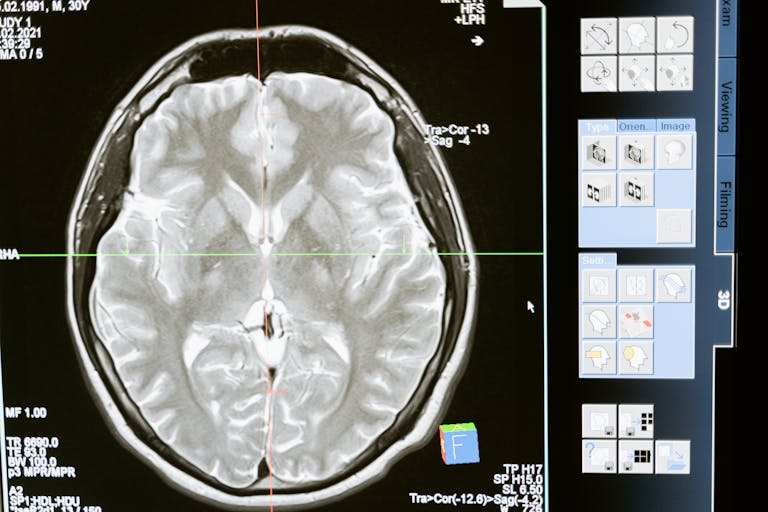Tiny passengers may be hitching a ride inside tumors, shaping how cancers grow, spread, and even respond to drugs. A new scientific review argues that nearly every cancer type harbors its own microbial community — a tumor microbiome — that could become a fingerprint for diagnosis and a lever for treatment.
The idea is both thrilling and fraught. Biology has already proven that microbes can cause cancer in some settings; but extending that logic across most tumors runs headlong into hard problems of contamination, reproducibility, and inference.
A sweeping survey of microbes inside tumors
The latest review, published in the journal Genes & Diseases, synthesizes dozens of studies reporting bacteria, viruses, and fungi within tumors across the body. It catalogs microbial patterns by cancer type: lung tumors often feature Proteobacteria and Firmicutes; colorectal tumors frequently harbor Fusobacterium; pancreatic tumors show microbial diversity that sometimes aligns with survival; ovarian tumors can contain bacteria, fungi, and, in some cases, oncogenic viruses.
Researchers propose several ways these organisms might influence cancer biology. Some microbes insert DNA into human genomes and disrupt cell safeguards. Others release toxins that damage DNA, promoting mutations. Still others modulate the immune microenvironment, dialing inflammation up or down and blunting anti-tumor T cells. In colorectal cancer, for example, Fusobacterium nucleatum has been associated with reduced T-cell activity and worse outcomes in multiple cohorts.
It is important to remember what this review is — and is not. It is not a single, definitive experiment; it is a map of findings to date, pointing to promising routes and warning about dead ends.
What we know for sure — and where the frontier lies
That microbes can drive cancer is no longer controversial in several cases. Human papillomavirus (HPV) is the leading cause of cervical cancer. Helicobacter pylori is a Group 1 carcinogen for gastric cancer. Chronic hepatitis B and C infections raise liver cancer risk. Epstein–Barr virus contributes to certain lymphomas and nasopharyngeal cancer. In these examples, the causal chain has been worked out over decades, with prevention strategies — from vaccines to eradication therapies — saving lives.
“Virtually all cervical cancer cases (99%) are linked to genital human papillomavirus infection.” — National Cancer Institute
By contrast, the notion that most solid tumors contain a distinct, influential community of bacteria or fungi remains a live question. Signals are intriguing and sometimes consistent — such as associations between Fusobacterium and colorectal cancer behavior — but mechanisms and causality are still being nailed down. Are microbes seeding tumors, or are tumors creating niches that microbes opportunistically fill? When microbial DNA shows up in sequencing data, was it truly inside the tissue, or carried in on a pipette tip?
The promise: new fingerprints and new levers for care
If tumor-specific microbes are real and reliably measurable, they offer three near-term opportunities:
1) Sharper diagnostics and monitoring
Microbial DNA and RNA could serve as barcodes of tumor type or stage, detected in biopsies or even blood. Because microbes can be abundant relative to rare tumor cells in circulation, they might amplify faint signals, potentially enabling earlier detection or tighter tracking of relapse.
2) Predicting and improving treatment response
In melanoma and other cancers, multiple groups have shown that gut microbes correlate with responses to immune checkpoint inhibitors. Whether through diet, targeted antibiotics, fecal microbiota transplantation, or next-generation probiotics, clinicians may eventually tune microbial communities to boost the odds that immunotherapy works — while carefully avoiding collateral damage.
3) New therapeutic targets
Some bacteria produce metabolites that accelerate tumor growth; others may suppress invasion or sensitize tumors to drugs. Mapping these pathways could yield adjuvants that block microbial pro-cancer signals or harness anti-cancer ones. A few experimental strategies even enlist engineered bacteria as delivery vehicles inside tumors.
Each of these ideas depends on a bedrock of rigorous evidence. And that is where the field’s growing pains are most visible.
The pitfalls: contamination, overreach, and a major retraction
Detecting microbes in tumors is a low-biomass problem: there is very little microbial material compared with human DNA. That makes false positives easy. Reagents, lab air, and sample-handling steps can introduce stray bacterial sequences. Without strict controls, signal and noise blur.
Those issues are not abstract. A widely cited 2020 study that used machine learning to classify cancers from microbial DNA in public datasets was later retracted by its publishing journal after critics raised concerns about contamination and analytical flaws. The episode underscored how fragile conclusions can be when methods are not airtight and independent labs cannot reproduce results.
What rigorous studies look like
- Sterile sampling in the operating room, with matched negative controls at every step (from tissue collection through library prep).
- Multiple orthogonal assays: sequencing plus targeted qPCR, in situ hybridization, and microscopy to verify that microbes are truly inside tumor cells or stroma.
- Spike-in standards to quantify microbial load, not just relative abundance.
- Pre-registered protocols and blinded, multi-center replication.
- Careful statistics that account for batch effects and contaminant taxa common in kits and reagents.
Applied consistently, these practices can separate robust biology from mirage.
How to read the latest headline responsibly
The tumor microbiome may change cancer care. It may also turn out to matter in fewer cancers, or in narrower ways, than early headlines suggest. When you encounter a new report, a few questions can help:
- Is the work observational or interventional? Associations are a start; causal tests move the field.
- Did the authors validate findings with multiple methods and rigorous controls for contamination?
- Are results replicated across cohorts, labs, and geographies?
- Do the claimed clinical applications (diagnostics, prognostics, therapy selection) outperform existing tools in head-to-head tests?
- Is the journal reputable and the dataset accessible for reanalysis?
A measured path to precision medicine
Science has already delivered microbial tools that prevent cancer — HPV vaccination and H. pylori eradication among them. The next frontier is subtler: decoding how microbes within and around tumors nudge disease trajectories and treatment effects, then translating that knowledge into practical gains for patients.
That path will require patience and humility. The most exciting ideas in oncology often arrive with hype, and the most durable triumphs are those that survive meticulous scrutiny. If the tumor microbiome truly offers each cancer a microbial fingerprint, the job now is to prove it — cleanly, transparently, and in ways that help clinicians and patients make better decisions.






